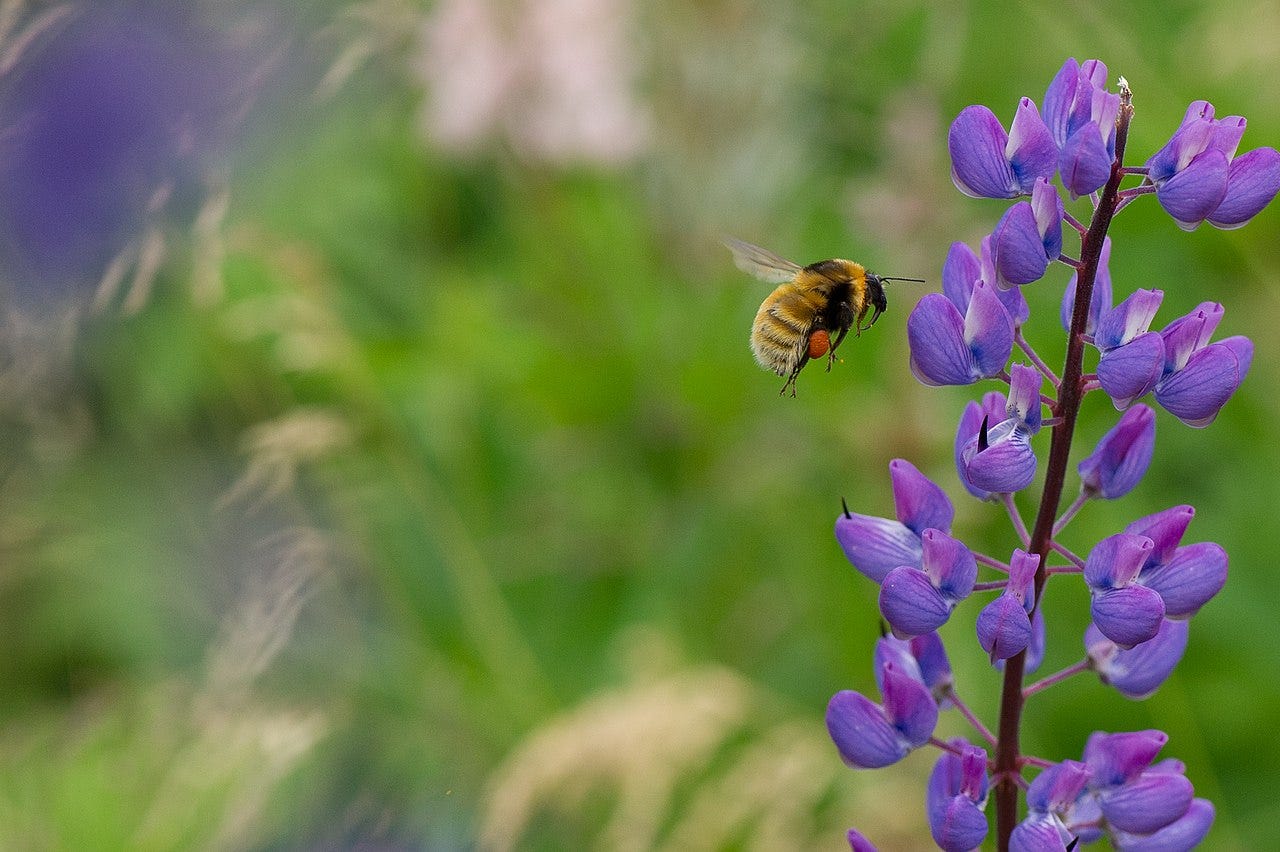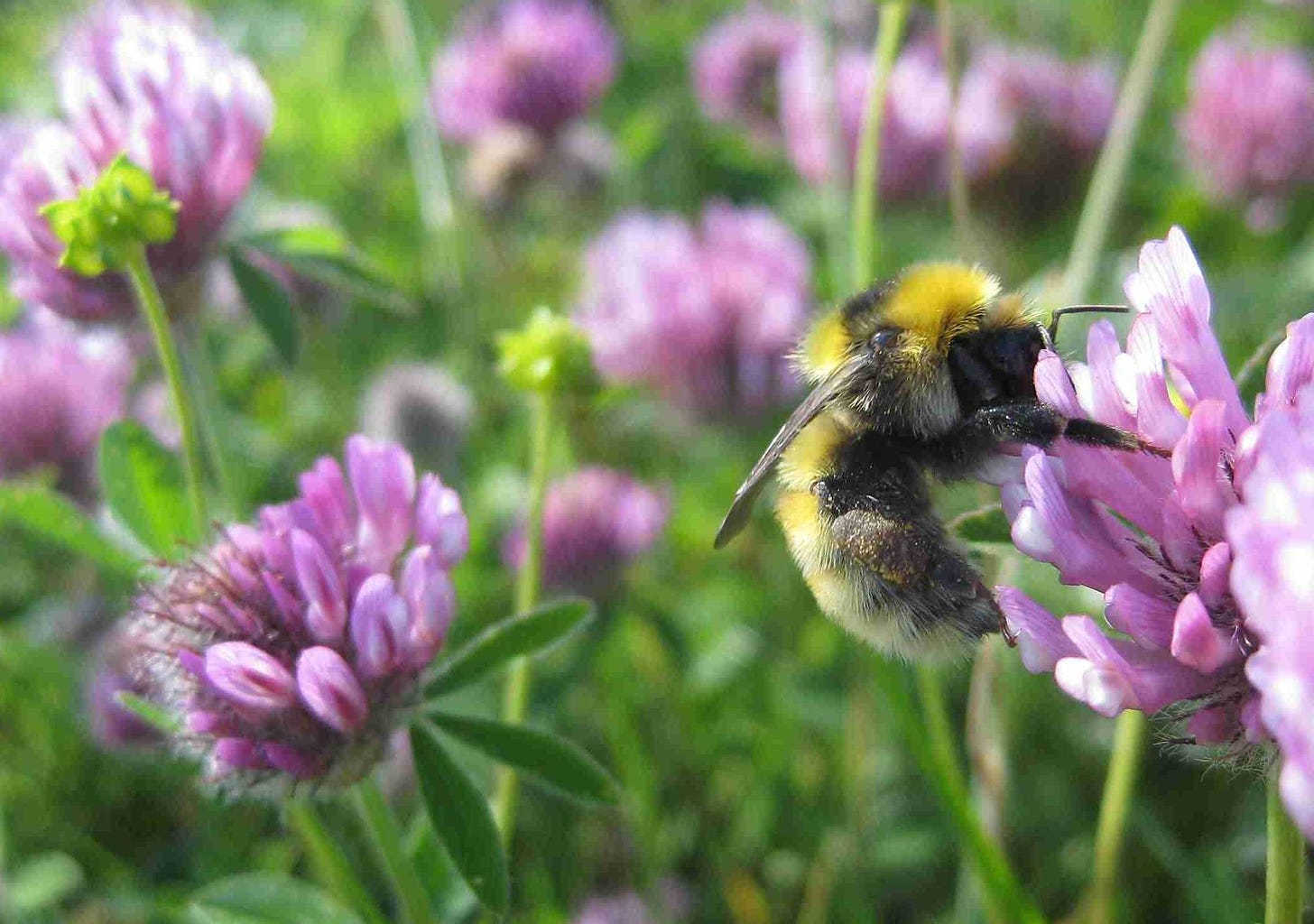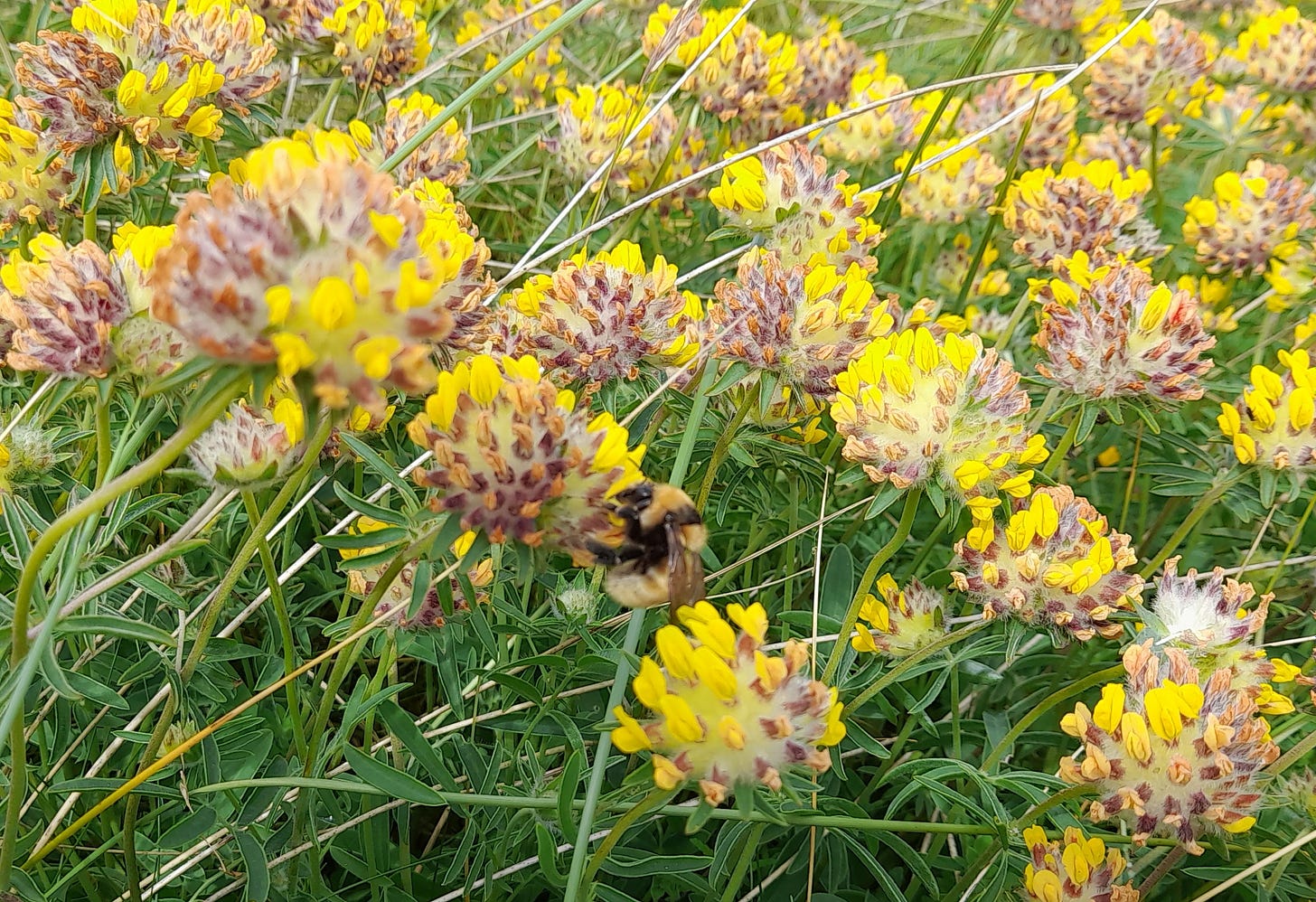A Queen Bee Encounter in my Garden
Sometimes, the smallest encounters can be the most meaningful, says Paul
Not all rare wildlife encounters require a trip to some exotic location involving great time and expense. Sometimes wonderful wildlife opportunities arise in surprising places or even at home. Sometimes it’s just a matter of scale. One such example happened to me in my very own garden in May.

She was a lovely conditioned newly emerged queen searching for nectar to build up her energy levels after a long hibernation period. This was my first great yellow bumblebee (bombus distinguendus) of the season and I was thrilled to bits to see her in my garden. I grabbed my phone and quickly took a couple of pictures before she flew off again. I managed to watch her as she landed at some Spanish bluebells in another part of the garden and carried on feeding.
Another couple of photos were captured and then I left her to continue feeding uninterrupted. I was more than happy enough with this bumblebee sighting and a few photos.
Later that evening, however, the weather turned very wet and windy and also surprisingly chilly - so the late walk in the garden with the dog was an unpleasant affair. I couldn’t help looking to the Spanish bluebells where I had last seen the great yellow and to my astonishment she was still there, looking worse for wear.
I went back for a plastic tub and out again to catch her and bring her indoors. She was now very slow and lethargic and catching her was no problem whatsoever. I placed some crumpled-up paper kitchen towel in the box with her and quickly made up a 50/50 mix of sugar and water and put a little in the up-turned lid of a bottle for her to safely drink from.

Tucked up nice and safe in the tub she eventually drank some of the sugar water and soon settled down in the paper towel and so we left her overnight. In the morning she was full of energy and searching every corner of the tub for an escape route.
By the time it came to leave for work the weather outside was much kinder and the sun was even appearing.
I carefully released her back in the garden close to where I caught her and she happily began to feed once more. I felt happy and privileged to be able to help such a tiny but important species such as this.
The great yellow bumblebee is now one of the two rarest bumblebee species in the UK. Healthy populations still exist in Orkney and the Hebrides but north Caithness and north Sutherland are the only remaining places on the mainland with breeding populations. With a short breeding season, uncertain weather patterns and unfavourable land management practices all affecting their survival, they need all the help they can get.
Paul Castle is the dedicated Countryside Ranger for North Sutherland and North Caithness with High Life Highland. Paul has devoted over two decades, to the ranger service of this area. His commitment reflects his love for the area, marked by its breathtaking landscapes, diverse wildlife, friendly communities and rich natural heritage. Paul's work plays a pivotal role in promoting and protecting the wildlife, flora, and fauna that make this part of Scotland so extraordinary.
Pollinator events in June:
Can you spot a common carder from a buff-tailed?
If not, or if you just want to learn more about bumblebees and how you can help them. Join the Ranger at Culbokie Creen wildflower meadow for a closer look at individual species and what features can help you identify them. We will also discuss threats and how we can mitigate for them.
Booking is essential as spaces are limited.






